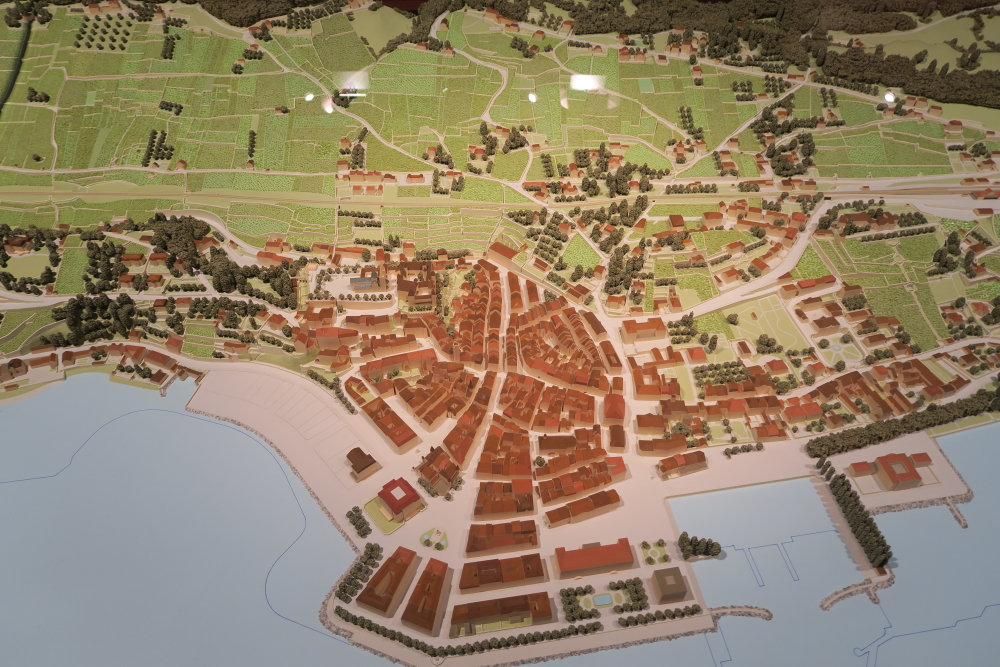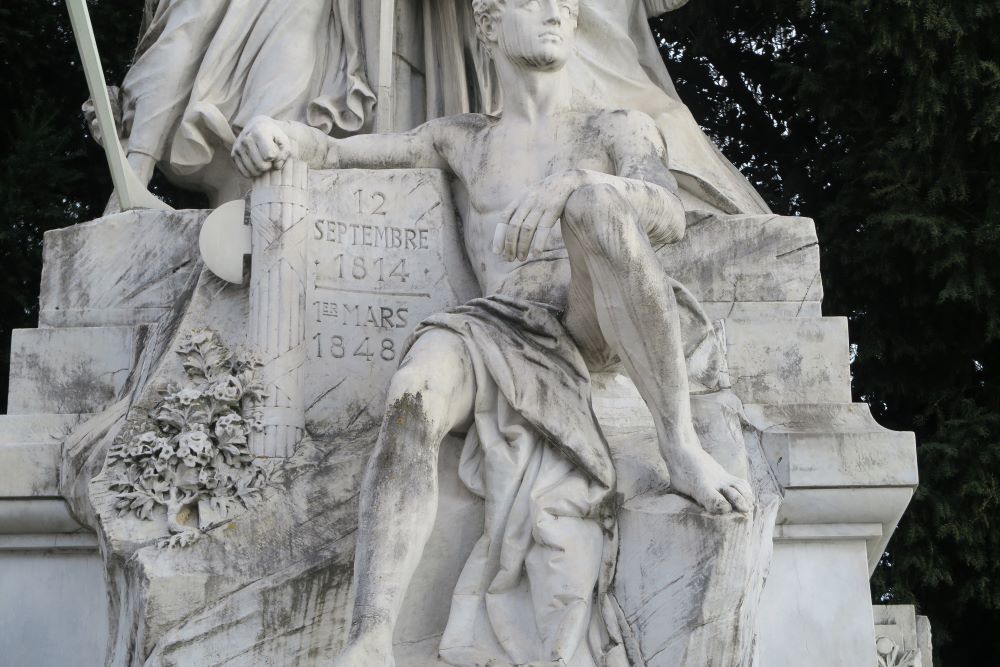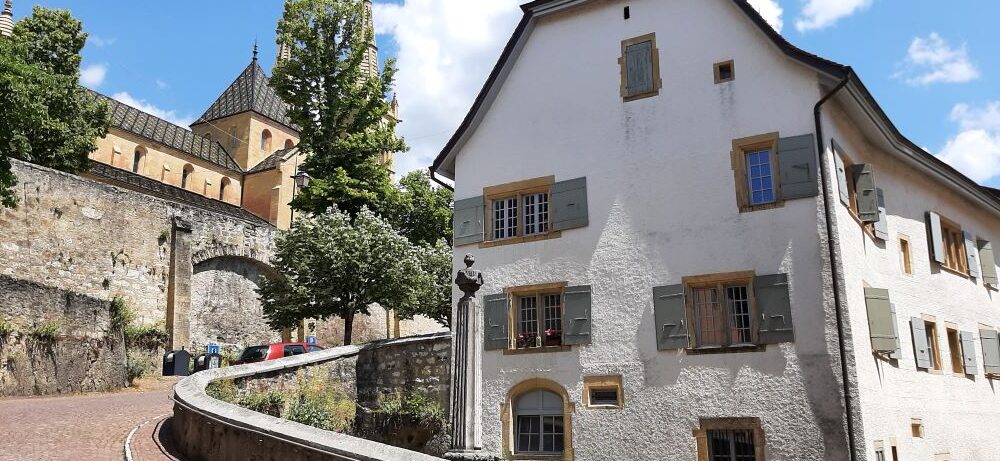The princely City and the canton of Neuchâtel
5 March 2023
Not much is known about the habitation of the area of the city of Neuchâtel until the year thousand. The first counts of Neuchâtel date back to the ‘second’ Kingdom of Burgundy (888-1032). The last King, Rudolf III (970-1032), built a castle on the rock—the beginning of today’s Neuchâtel. In the years 1185-1190 followed the abbey, la Collégiale.



Galerie de l’histoire de Neuchâtel. The city around 1400
The dynasty of the Counts of Neuchâtel died out in 1395. Until 1504, the German families Freiburg and Hochberg successively ruled the county. The French (royal and Catholic) d’ Orléans-Longueville family acquired the county in 1504 after the extinction of these German dynasties. The county became a principality.
However, its citizens sought rapprochement with the 13 cantons of the Confederation, as can be seen on the wall of the castle. This rapprochement went so far that cantons ruled the principality for several years (1512-1529), an occupation with the consent of the citizens.






In 1530, Neuchâtel became Protestant. It had consequences for the future of the principality. The dynasty d’ Orléans-Longueville died out in 1706. The States-General (les Trois états) of Neuchâtel wanted a Protestant prince who resided far away.
There were several pretenders, including the French king. The choice was determined by religion and geopolitical motives. Berlin was much further away than Paris. Moreover, the (Protestant) cantons kept an eye on it. Neuchâtel had been closely allied with the Confederation since the ‘years of occupation’ 1512-1529.
The (Protestant) Prussian King of the Hohenzollern dynasty, Frederick William 1 (1688-1740), acquired the principality of Neuchâtel in 1707. He remained (formally) Prince of Neuchâtel until 1857.


City Hall
The French era (1798-1813) led to a brief French interlude in 1806. French Marshal Alexandre Berthier (1753-1815) was the prince of Neuchâtel from 1806 to 1813, after which the Prussian king regained power (formally) in 1814 after the defeat of Napoleon and the departure of the French.
In 1815, Neuchâtel became a canton of the Eidgenossenschaft and remained a principality of the Prussian king. This situation ended in 1857, when King Frederick William IV (1795-1861) formally relinquished his rights after the Confoederatio Helvetica of 22 cantons, including Neuchâtel, was established in 1848 and the industrial towns of Le Locle and La Chaux-de-Fonds led a successful revolt against the royalist aristocracy of the city of Neuchatel.


Monument 1814-1848
Unlike the changes in other cantons, the first revolt in the European revolution year of 1830 had failed (e.g. the split Basel-Stadt and Basel-Landschaft and the Regeneration with a modern Constitution in 11 cantons).
The last monarch disappeared from Switzerland in 1857. However, many city palaces still recall the centuries-old French, German and Prussian periods.
The city subsequently developed into an industrial and commercial centre, including in watchmaking, microtechnology and electronics, tourism, trade and, for example, cocoa processing. Suchard was the first chocolate multinational!
Its rapid population growth and urban development are well documented and mapped in Les Galeries de l’historie.



Swiss Center for Electronics and Microtechnology
Today, the city with its university and medieval centre is, after its recent merger with some municipalities, the third largest city in Romandie or French-speaking Switzerland, beautifully situated at the foot of the Jura on Lake Neuchâtel.
However, this did not eliminate the rivalry between the ‘industrial La Chaux-de-Fonds and the ‘aristocratic’ Neuchâtel, “le Bas du canton et le Haut du Canton”, the low-lying and the high-lying areas of the canton (La Chaux-de-Fonds is Switzerland’s highest-lying town at almost 1 000 metres).





Rowing on Lake Neuchâtel Photo’s: Gaetano Mileti





L’Hôtel DuPeyrou













Le Jardin anglais and the Casino of Neuchâtel

Neuchâtel, Bulgari

